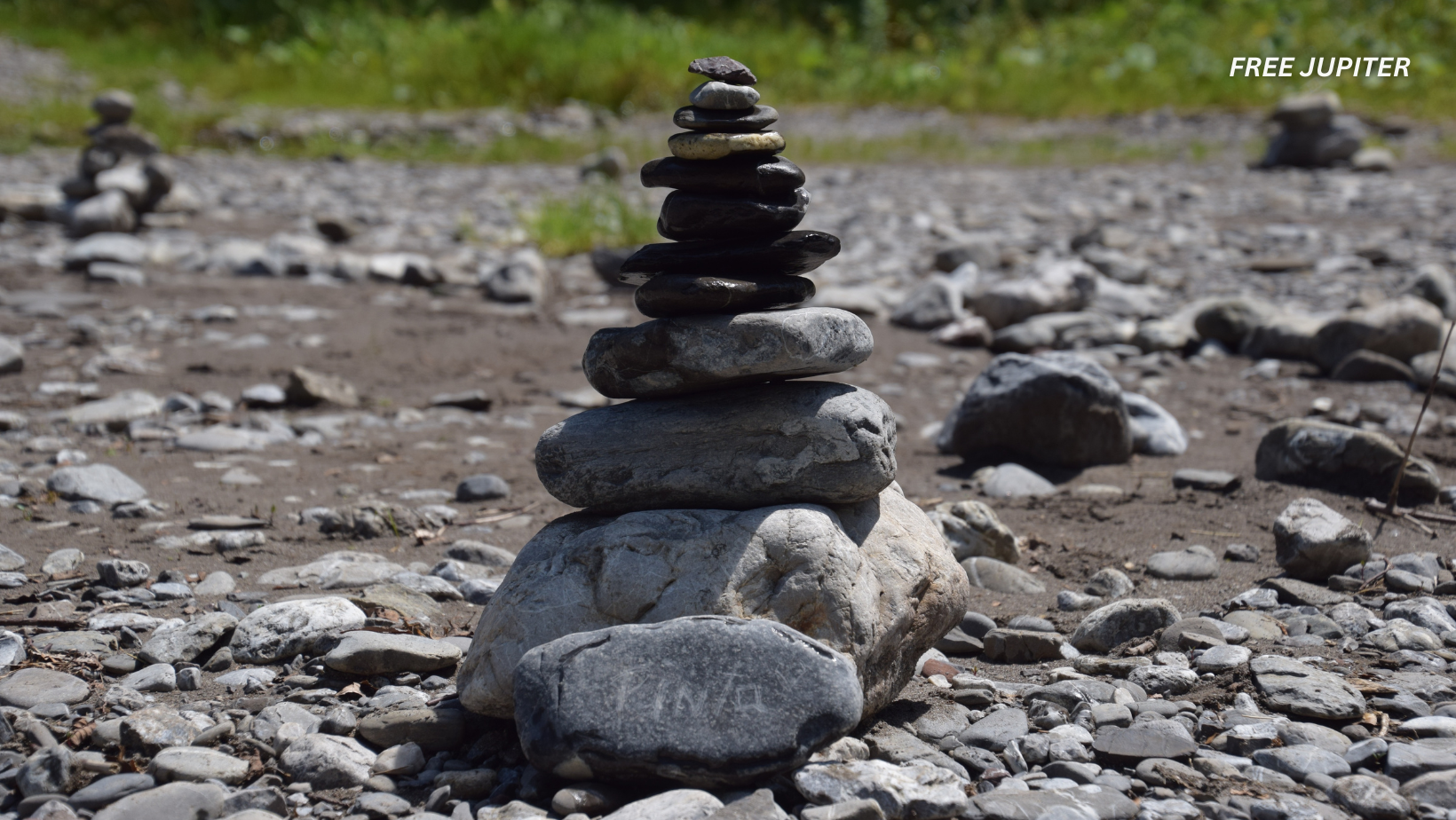In many wilderness areas across the United States, visitors often encounter stacked stones arranged in small towers, commonly known as rock cairns. These formations, created by human hands, might seem harmless or even artistic. Some are modest, built with just a few rocks, while others are large and intricate, appearing to defy gravity. Despite their visual appeal, a growing number of park officials, especially those at Yosemite National Park, are asking visitors not to build them and, in certain instances, to actively dismantle the ones already in place.
This movement is not arbitrary. It is rooted in environmental concern, a desire to preserve natural habitats, and the importance of maintaining safe and clear trails. While cairns may appear innocent or even helpful to some hikers, the presence of unauthorized rock stacks is increasingly viewed as a disruption to the delicate balance of nature and the carefully managed trail systems.
A Call to Topple, Not Build
Recently, Yosemite National Park took a firm stance against the construction of unauthorized rock cairns. In a public message shared on social media, rangers encouraged park-goers to knock over these stone piles when encountered along trails. The call was clear: leave nature untouched, and avoid building structures that alter the wilderness experience for others.
“According to Leave No Trace ethics, when we explore wild spaces, the goal is to leave no evidence of our presence,” a statement from Yosemite read. “Rock cairns, especially oversized ones, are a human imprint and distract from the natural landscape.”
This message was accompanied by a video in which a park ranger was shown dismantling a particularly large cairn—one that reached nearly the height of a full-grown adult. The message resonated with those familiar with the park’s mission to conserve and protect the untouched beauty of its trails and ecosystems.
Read more: Archaeologists Find 23,000-Year-Old Footprints That Rewrite the Story of Humans in America
Environmental Disruption: A Hidden Impact
The construction of cairns, while often well-intentioned, can cause significant harm to the surrounding environment. Beneath the surface of each rock lies a hidden world. Insects, amphibians, reptiles, and microorganisms often dwell under stones, relying on these natural shelters for protection and survival. When rocks are lifted and repositioned, these tiny ecosystems are disrupted—sometimes irreparably.
Moreover, soil and plant life are often affected. In many cases, vegetation near trails is trampled or uprooted during the process of collecting stones. What may appear to be a harmless act of creative expression can result in long-term environmental degradation.
While many visitors are careful to avoid littering or stepping off marked trails, building rock cairns is frequently overlooked as a source of environmental harm. Yet the impact is real, and increasingly acknowledged by conservation experts and park rangers alike.
The Problem with Misleading Markers
Beyond ecological consequences, unauthorized cairns present a practical hazard: they can mislead hikers. In many national parks, official cairns are deliberately constructed by rangers to mark important trail junctions or help guide travelers through terrain where paths may not be clearly visible.
When visitors begin building their own rock stacks, these informal structures can create confusion. A hiker who follows an unofficial cairn might find themselves led astray—wandering off the intended route, potentially putting themselves in danger.
This is particularly concerning in areas with sparse signage or challenging landscapes, where navigational aids are crucial. The unintended result of a well-meaning but misplaced cairn can be a lost visitor, emergency rescues, and further strain on park resources.
Read more: 4,000 Meters Below The Sea, Scientists Have Finally Found the Incredible ‘Dark Oxygen’
Not All Parks Take the Same Approach
Though Yosemite has taken a proactive stance in urging visitors to dismantle unauthorized rock piles, not all parks share this view. At Arches and Canyonlands National Parks, for example, a different message is being communicated.
Karen Garthwait, a spokesperson for these parks, explained that visitors should refrain from disturbing any rock cairns—whether they appear official or not. “We ask that visitors do not disturb them, knock them down, add to them, or build their own,” Garthwait said. “It’s very easy to get lost in the desert, and official cairns are essential for navigation.”
While the parks discourage the creation of new, unauthorized cairns, they advise guests not to dismantle existing ones themselves. Instead, suspicious rock structures should be reported to park officials. Rangers are trained to assess whether a cairn is official, and they will remove non-sanctioned stacks safely, without endangering the trail system or nearby habitats.
Garthwait also provided some guidance for distinguishing between authorized cairns and those created by visitors. Official cairns tend to be more structurally sound and consistent in design. They typically contain at least three levels of rocks and are placed at regular intervals, forming a clear line of sight for navigation. In contrast, guest-made cairns may be found in clusters or resemble decorative rock gardens—features that, while perhaps visually appealing, do not serve a functional purpose.
Read more: Engineer Claims He’s Found A Way to Overcome Earth’s Gravity
A Deeper History of Cairns
Long before rock cairns became a subject of environmental debate in national parks, they held deep cultural and historical significance. In many parts of the world, including Scotland, cairns were constructed to mark burial sites or ceremonial locations. These ancient structures were often carefully planned, and over time, they became integrated with their surroundings—moss-covered and partially reclaimed by nature.
In North America, Indigenous groups also built rock formations, though the exact purpose and symbolism of many of these sites remain debated among archaeologists. According to Lucianne Lavin, director of research at the Institute for American Indian Studies in Connecticut, cairns found throughout the northeastern United States might not be as simple as they appear.
“There are archaeologists who believe they’re just piles of rocks from agricultural clearing,” Lavin noted. “But others, myself included, recognize a broader range of cultural meanings behind these features.”
These stone piles may have served spiritual, navigational, or territorial purposes. In some instances, they could have marked seasonal campsites, hunting grounds, or sacred sites. Regardless of their original intent, such cairns hold cultural value that warrants preservation. Misidentifying them as casual hiker-made stacks and dismantling them could result in the loss of significant historical artifacts.
The Ethics of Preservation
The differing views among park officials, historians, and archaeologists highlight the complexities of managing rock cairns in natural settings. On one hand, there is a clear environmental and safety rationale for discouraging unauthorized stacks. On the other hand, some cairns—whether built recently or centuries ago—may carry historical or cultural weight.
This complexity underscores the importance of informed decision-making when encountering rock formations on trails. While dismantling piles may align with Leave No Trace principles in many cases, it’s essential to approach the situation thoughtfully, especially in areas with known cultural history.
For this reason, many experts advise reporting suspicious or unusual rock piles rather than removing them personally. Park staff are trained to distinguish between modern nuisances and potential heritage sites, ensuring that decisions are made with care and expertise.
A Shared Responsibility
Preserving the natural beauty of national parks is a shared responsibility—one that involves respecting both the land and the guidelines set forth by those who protect it. While building a rock cairn might seem like a harmless way to mark a memory or leave a personal touch on the landscape, the reality is more complicated.
Ecosystems are delicate. Even small actions can create ripple effects. By lifting stones and creating structures, habitat is disturbed, trails may be compromised, and the pristine nature of wilderness spaces is altered.
At Yosemite, the message is clear: leave the rocks where they lie. Let the land speak for itself, uninterrupted and undisturbed.









